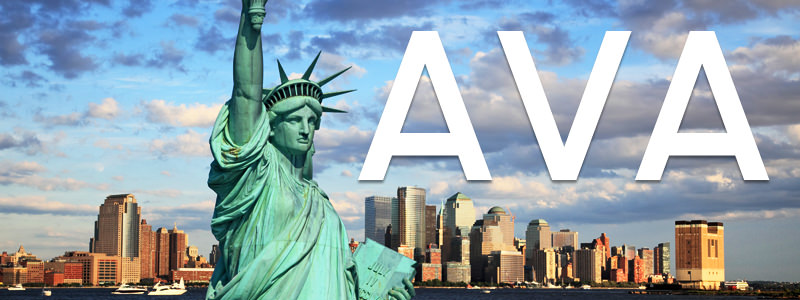American Viticultural Areas, which go by the shorthand AVA, are similar to the geographical wine classification systems that were pioneered in Europe. We say similar because there are some key differences. AVAs, like their Old World, brethren are restricted by geographical boundaries. If a wine label bears an AVA, at least 75% of the grapes used to make it must have been grown in that area (some states have higher requirements, such as California which requires 100%).
This is where the similarity with the Old World ends. Rules relating to yield, which grapes may be used, winemaking practices and other requirements vary from country to country, and region to region. These rules can lead to situations like Fabien Jouves’ protest-in-labeling “You F**k My Wine?,” which does not comply with the rules of the Cahors AOC, in France.
Interesting Facts About The AVA System
- AVAs are approved by the TTB, the Alcohol and Tobacco Tax and Trade Bureau (learn about its split from the ATF in 2003 here).
- As of July 23, 2014, there were approximately 214 AVAs approved by the TTB.
- Valley is found in the names of 68 AVAs, making it the most commonly used word amongst the AVA names.
- Other popular words? Mountain(s) 16; Hill(s) 16; Lake(s) 14; River 12; District 7; County 6; Coast 6; Santa 6; Creek 5; Highlands 5.
- Longest name? Antelope Valley of the California High Desert with 39 characters (45 including spaces). Runners up: Northern Neck George Washington Birthplace with 38 characters (42 including spaces) & Moon Mountain District Sonoma County with 32 characters (36 including spaces).
- Shortest name? Lodi with 4 characters.
- Most words? Antelope Valley of the California High Desert with 7 words.

The Largest AVA: Upper Mississippi River Valley AVA
- Established in 2009.
- At 29,914 square miles (19,144,960 acres), the Upper Mississippi River Valley AVA stretches across four states.
- Includes land in Minnesota, Iowa, Wisconsin and Illinois.
- According to Wine-Searcher, “At the time the AVA was granted, there were 32 wineries and nearly 500 acres of vines planted in the Upper Mississippi Valley,” which is 0.002694% of the total land.

The Smallest AVA: Cole Ranch AVA
- Established in 1983.
- Only 189 acres, about 55 – 60 of which are under vine according to various sources.
- Located in Mendocino County, California.
- The original owner was John Cole, a retired engineer.
- All planted land in the appellation is owned by the winery he founded, Esterlina Vineyards, which he sold to the Sterling family in 1996.
- Learn more about this interesting little AVA in this profile by Jon Bonné.

The Oldest AVA: Augusta AVA
- Established in 1980.
- The AVA system was approved in 1978. Augusta was approved on June 20th 1980, beating out #2 Napa Valley by 8 months, which was granted its approval on February 27th 1981.
- It’s located in Missouri, centered around the city of Augusta.
- Both Vitis vinifera and Vitis labrusca grapes are grown in the AVA.
- The Norton grape is grown here, which is America’s oldest native grape.

The Newest AVAs: Malibu Coast AVA and Upper Hiwassee Highlands AVA (July 18, 2014)
- The Malibu Coast AVA is in California. One border includes the famed Mulholland Drive.
- The Upper Hiwassee Highlands AVA straddles the border of Georgia and North Carolina.
- Some info from the Feds on why they approved the Malibu Coast AVA: “TTB has also determined that the established Saddle Rock-Malibu and Malibu-Newton Canyon AVAs will be part of the Malibu Coast AVA because all three AVAs share similar characteristics, including high elevations, warm temperatures, marine fog, and well-drained soils that contain volcanic material…….The two smaller AVAs are located in valleys set within the larger mountain range that comprises the Malibu Coast AVA and are somewhat sheltered from the marine fog by the high valley rims.”
- Some info from the petition to the TTB on why they should approve the Upper Hiwassee Highlands AVA: “The proposed AVA contains 26 commercially producing vineyards, growing approximately 54 acres of French-American hybrids, American grape varieties, and Vitis vinifera. According to the petition, present vineyard operators estimate they will expand their plantings by an additional 75.5 acres within the next 5 years. Five wineries were operating within the proposed AVA at the time the petition was submitted.”
- Want to geek out? Read the full rulings at the Federal Register’s website (Malibu Coast & Upper Hiwassee Highlands)

The Northernmost AVA: Puget Sound AVA
- Established in 1995.
- Washington’s 2nd largest AVA, and its only AVA west of the Cascade Mountains.
- The Puget Sound AVA touches the Canadian border. It’s the only AVA west of the Mississippi to do so.
- Most wineries here receive their grapes from vineyards in Eastern Washington. The appeal of the location is its proximity to the bulk of the state’s population in Seattle and its environs.

The Southernmost AVA: Texas Hill Country AVA
- Established in 1991.
- One of the largest AVAs at over 14,000 square miles (9.6 million acres).
- There are two sub-regions within the AVA: Bell Mountain AVA and Fredericksburg in the Texas Hill Country AVA.
- The Texas Hill Country region is home to the descendants of German immigrants who exert a strong cultural influence. Though the Germans who settled this area of Texas are credited with planting the state’s first vines, relatively few German grape varieties are planted in this region today.

The Easternmost AVA: Martha’s Vineyard AVA
- Established in 1985.
- The AVA includes the islands of Martha’s Vineyard and Chappaquiddick Island.
- The AVA covers 64,000 acres, though very little wine is grown here.
- The application was opposed by Heitz Cellars of Napa Valley, makers of the Martha’s Vineyard Cabernet Sauvignon, a bottle you’ll pay around $200 and up for.
Some images via Shutterstock.com

